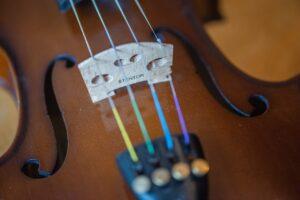Estimated reading time 3 minutes
Table of Contents
Introduction
Do people tell you that you sing out of tune? Do you want to be able to sing like your favorite vocal artist? Some people just seem to naturally sing in tune. Don’t panic! The skill of harmonizing in tune can be learned. Read more to learn the tips for people who can’t sing in tune.

Tips for People Who Can't Sing in Tune #1: Good Tone
The post Tips for People Who Can’t Sing in Tune brings together information on singing that I’ve already covered in other posts:
- However, I wanted to have a post that pulls all these concepts together into one article.
- So, to keep it from becoming too large, I’ll be liberally referencing the posts that have already covered each tip.
Pay Attention to Your Vowels:
Producing a good tone and singing in tune are two sides of the same coin. Therefore, it’s critical that you pay attention to your vowels. These posts will help your master vowel production:
Sing with a High Soft Pallet:
It’ll be impossible to sing with a good tone when your soft pallet has collapsed. To learn how to sing with a high soft pallet:
Sing into the Mask:
Another thing that’ll help you produce a good tone will be an exercise called sing into the mask:

Tips for People Who Can't Sing in Tune #2: Air Flow
These next tips for people who can’t sing in tune revolve around the flow of air in singing.
Sing with a Supported Tone:
The power in your singing comes from your diaphragm muscle. If you don’t sing from the gut, you’ll have a very hard time singing in tune. To learn how to sing with a supported tone:
Phrasing the Music so You Have Enough Air to Stay in Tune:
The places you take breaths will shape the phrases of the song’s lyrics. Also, where you breathe in the music determines if you’ll have enough air to get to the end of the phrase. If you don’t have enough air, you’ll go flat:
Tips for People Who Can't Sing in Tune #3: What to Listen For
The final tips for people who can’t sing in tune have to do with what to listen for when practicing harmonies.
Pay Attention to the Buzz Between Notes:
The buzz between notes, created by the critical bands, helps you tune up your harmonies. To learn more:
Pay Attention to the Shifting Tone Color in the Harmonies:
When you get two notes in tune, they fuse together. As you progress from chord to chord, you’ll hear the tone color shift. This color shift helps you hear when the harmonies have reached their optimal tuning:
Pay Attention to the Beating Between Notes:
The “wah-wah-wah” pulsation that you hear between out of tune notes is a major tuning cue. This link shows you what to listen for:
Sing Backup Vocals without Vibrato:
While vibrato can be a powerful interpretation tool, it can also make it hard to hear the beating. If you can’t hear the beating, you won’t get your harmonies tightly in tune. Save the vibrato for the lead vocals, and sing backing vocals without vibrato:

Tips for People Who Can't Sing in Tune #4: The Intonation Flight Simulator
For the previous tips for people who can’t sing in tune to work, you need to practice with other vocalists to learn how to hear the harmonies. What do you do if you don’t have an a cappella ensemble handy?
The Intonation Flight Simulator’s sing-along soundtracks will train your ear to harmonize in tune:
- Ear Training Exercises for Harmonizing in Tune
- Singing Major and Minor Harmonies in Tune
- How to Harmonize in Minor Keys
- Sing 7th Chords in Tune
Relate Posts:
© 2023 Geoffrey Keith
Join me for in-person or online lessons today!
How Do I Match My Pitch to Another Singer?
“How do I match my pitch to another singer?” Pitch matching is the starting place for ear training. If you can’t match your pitch to the same note another vocalist sings, you won’t be ready to learn how to harmonize. Don’t worry, the sing-long soundtracks will help! Keep reading to learn how it works. Estimated reading time 2 minutes.
Read MoreWhat Does Intonation Mean and Why Is It Essential in Music?
Have you ever wondered what the word intonation means? In music, it’s an important part of performance for many instruments, and it impacts all instruments to one degree of another. Keep reading “What Does Intonation Mean and Why Is It Essential in Music?” to learn more. Estimated reading time 4 minutes.
Read MoreA Harmony’s Length Impacts Singing in Tune
Does singing in tune seem like a mystery with no clues? Knowledge is power. Read more to find out how a harmony’s length impacts singing in tune. Estimated reading time 7 minutes.
Read MoreReading Music (A Quick Guide to How to Read Music)
Do you want to know how to read sheet music? It doesn’t matter whether you’re talking vocal sight reading, reading classical music, or understanding guitar tab, basic music reading will remain mostly the same. In some way, shape, or form all music notations track notes and rhythms, but how they do so will sometimes be different. Read more of "Reading Music (A Quick Guide to How to Read Music)" to get an overview of how to read sheet music. Estimated reading time 5 minutes.
Read More




